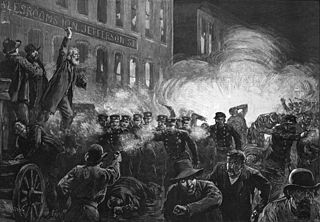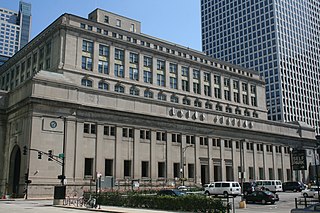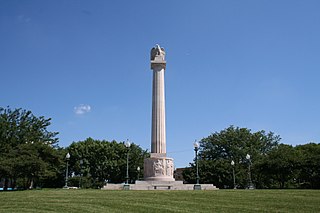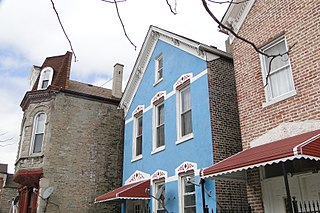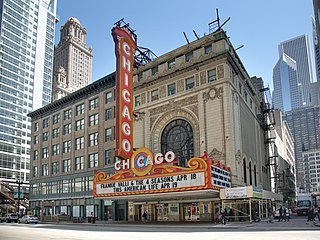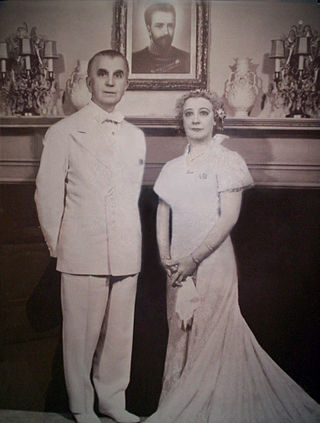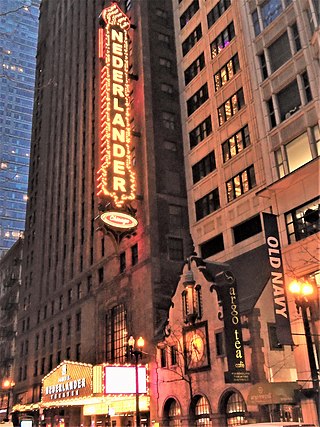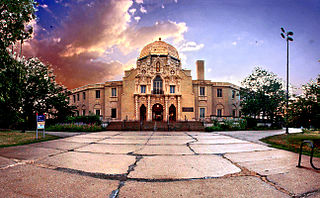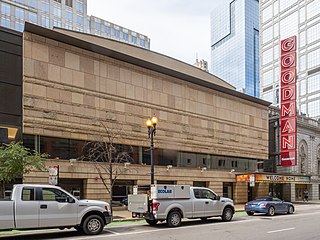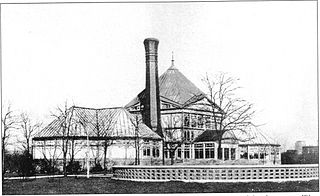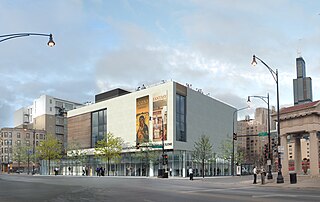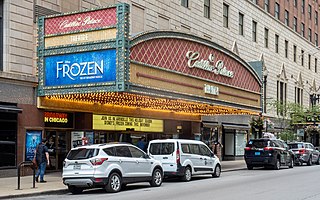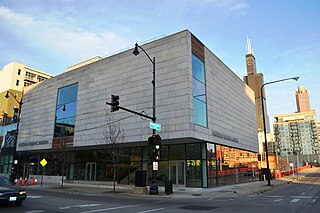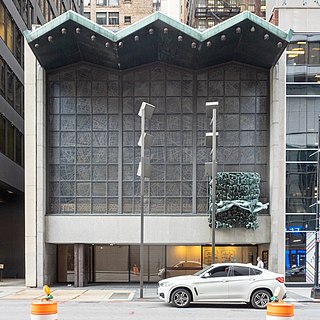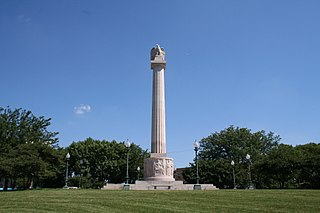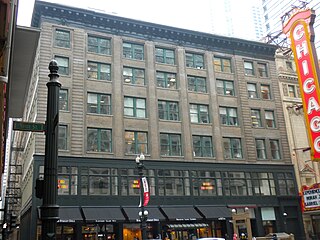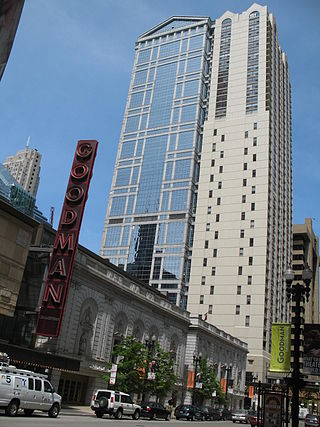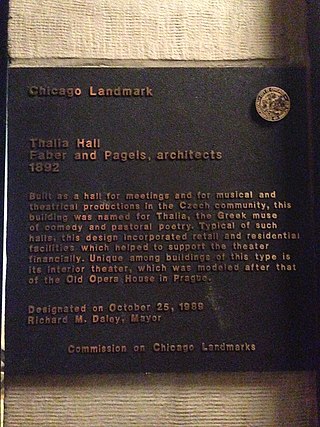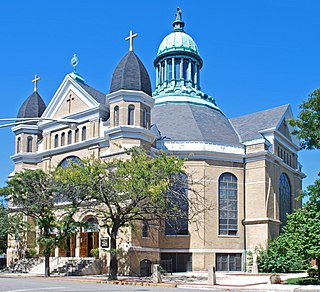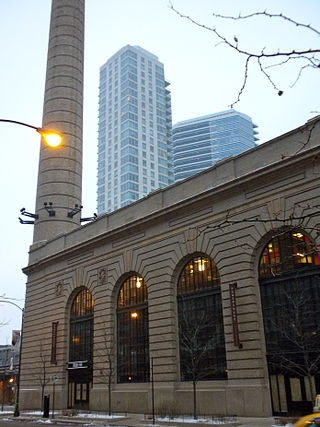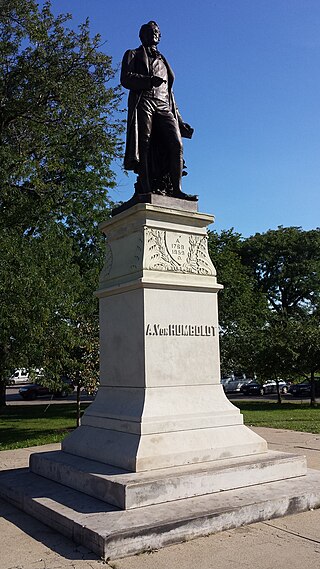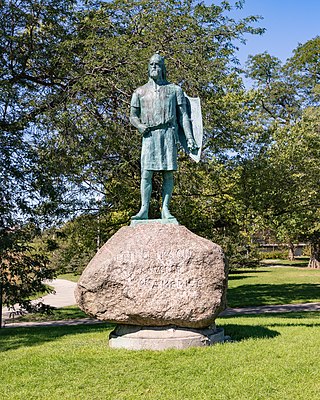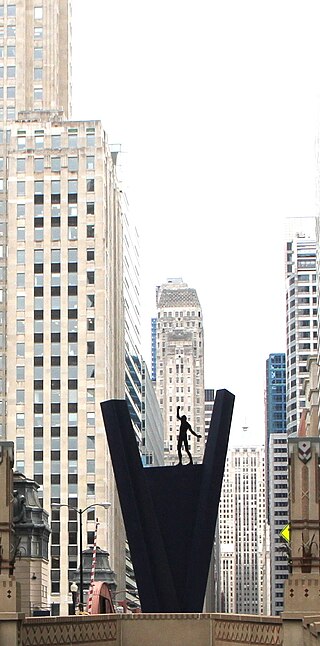30 Sights in West Chicago Township, United States (with Map and Images)
Legend
Welcome to your journey through the most beautiful sights in West Chicago Township, United States! Whether you want to discover the city's historical treasures or experience its modern highlights, you'll find everything your heart desires here. Be inspired by our selection and plan your unforgettable adventure in West Chicago Township. Dive into the diversity of this fascinating city and discover everything it has to offer.
Sightseeing Tours in West Chicago Township1. Haymarket Memorial
The Haymarket affair, also known as the Haymarket massacre, the Haymarket riot, the Haymarket Square riot, or the Haymarket Incident, was the aftermath of a bombing that took place at a labor demonstration on May 4, 1886, at Haymarket Square in Chicago, Illinois, United States. The rally began peacefully in support of workers striking for an eight-hour work day, the day after the events at the McCormick Harvesting Machine Company, during which one person was killed and many workers injured. An unknown person threw a dynamite bomb at the police as they acted to disperse the meeting, and the bomb blast and ensuing retaliatory gunfire by the police caused the deaths of seven police officers and at least four civilians; dozens of others were wounded.
2. Chicago Union Station
Chicago Union Station is an intercity and commuter rail terminal located in the West Loop neighborhood of the Near West Side of Chicago. Amtrak's flagship station in the Midwest, Union Station is the terminus of eight national long-distance routes and eight regional corridor routes. Six Metra commuter lines also terminate here.
3. Logan Square
Logan Square is an official community area, historical neighborhood, and public square on the northwest side of the City of Chicago. The Logan Square community area is one of the 77 city-designated community areas established for planning purposes. The Logan Square neighborhood, located within the Logan Square community area, is centered on the public square that serves as its namesake, located at the three-way intersection of Milwaukee Avenue, Logan Boulevard and Kedzie Boulevard.
4. Pilsen
Lower West Side is a community area on the West Side of Chicago, Illinois, United States. It is three miles southwest of the Chicago Loop and its main neighborhood is Pilsen. The Heart of Chicago is a neighborhood in the southwest corner of the Lower West Side.
5. Chicago Theatre
The Chicago Theatre, originally known as the Balaban and Katz Chicago Theatre, is a landmark theater located on North State Street in the Loop area of Chicago, Illinois. Built in 1921, the Chicago Theatre was the flagship for the Balaban and Katz (B&K) group of theaters run by A. J. Balaban, his brother Barney Balaban and partner Sam Katz. Along with the other B&K theaters, from 1925 to 1945 the Chicago Theatre was a dominant movie theater enterprise. Currently, Madison Square Garden, Inc. owns and operates the Chicago Theatre as a 3600 seat performing arts venue for stage plays, magic shows, comedy, speeches, sporting events and popular music concerts.
6. I Am Temple
The I AM Movement, also referred to as the I AM Temple, is the original ascended master teachings neo-Theosophical religious movement founded in the early 1930s by Guy Ballard (1878–1939) and his wife Edna Anne Wheeler Ballard (1886–1971) in Chicago, Illinois. It is an offshoot of theosophy and a major precursor of several New Age religions including the Church Universal and Triumphant.
7. James M. Nederlander Theatre
The James M. Nederlander Theatre is a theater located at 24 West Randolph Street in the Loop area of downtown Chicago, Illinois. Previously known as the Oriental Theatre, it opened in 1926 as a deluxe movie palace and vaudeville venue. Today the Nederlander presents live Broadway theater and is operated by Broadway In Chicago, currently seating 2,253.
8. Garfield Park
Garfield Park is a 184-acre (0.74 km2) urban park located in the East Garfield Park neighborhood on Chicago's West Side. It was designed as a pleasure ground by William LeBaron Jenney in the 1870s and is the oldest of the three original parks developed by the West Side parks commission on the Chicago park and boulevard plan. It is home to the Garfield Park Conservatory, one of the largest plant conservatories in the United States. It is also the park furthest west in the Chicago park and boulevard system.
9. Albert Ivar Goodman Theatre
Goodman Theatre is a professional theater company located in Chicago's Loop. A major part of the Chicago theatre scene, it is the city's oldest currently active nonprofit theater organization. Part of its present theater complex occupies the landmark Harris and Selwyn Theaters property.
10. Anna and Frederick Douglass Park
Douglass Park is a part of the Chicago Park District on the West Side of Chicago, Illinois. Established in 1869 and initially named South Park, its 173 acres (0.70 km2) are in the North Lawndale community area with an official address of 1401 S. Sacramento Drive.
11. National Museum of Mexican Art

The National Museum of Mexican Art (NMMA) is a museum featuring Mexican and Chicano art and culture. It is located in Harrison Park in the Pilsen neighborhood of Chicago, Illinois. The museum was founded in 1982 by Carlos Tortolero and opened on March 27, 1987. It is the only Latino museum accredited by the American Alliance of Museums. The museum describes itself as the largest Latino cultural institution in America.
12. Greektown
Greektown is a social and dining district, located on the Near West Side of Chicago. Today, Greektown consists mostly of restaurants and businesses, although a cultural museum and an annual parade and festival still remain in the neighborhood.
13. Civic Opera House
The Civic Opera House, also called Lyric Opera House is an opera house located at 20 North Wacker Drive in Chicago. The Civic's main performance space, named for Ardis Krainik, seats 3,563, making it the second-largest opera auditorium in North America, after the Metropolitan Opera House. Built for the Chicago Civic Opera, it has been home to the Lyric Opera of Chicago since 1954 and the Joffrey Ballet since 2021. It is part of a complex with a 45-story office tower and two 22-story wings, known as the Civic Opera Building that opened November 4, 1929 and features Art Deco details.
14. Cadillac Palace Theatre
The Cadillac Palace Theatre is operated by Broadway In Chicago, a Nederlander company and seats 2,344. It is located at 151 West Randolph Street in the Chicago Loop area. Opened in 1926 and designed largely in the French Baroque style, it is connected to the historic Eitel Brothers' Bismarck Hotel, and was for a time known as the, Bismarck Theatre. Cadillac has held the naming rights since 1999.
15. Humboldt Park
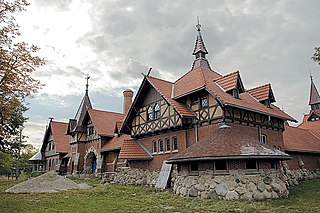
Humboldt Park is a 207-acre (84 ha) park located at 1400 North Sacramento Avenue in West Town, on the West Side of Chicago, Illinois. To its west is the neighborhood named after it, also called Humboldt Park. It opened in 1877, and is one of the largest parks on the West Side. The park's designers include William Le Baron Jenney, and Jens Jensen.
16. National Hellenic Museum
The National Hellenic Museum is the second oldest American institution dedicated to displaying and celebrating the cultural contributions of Greeks and Greek-Americans. Formerly known as the Hellenic Museum and Cultural Center, the National Hellenic Museum is located in Chicago’s Greektown, at the corner of Halsted and Van Buren Streets. The National Hellenic Museum has recently undergone a modernization program that cumulated in the museum moving to its current building in December 2011. The official opening of the NHM took place on December 10th, 2011 and proved to be a marked event within the Greek community of Chicago.
17. National Museum of Puerto Rican Arts & Culture
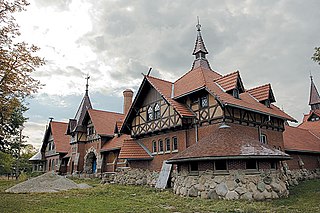
The National Museum of Puerto Rican Arts and Culture is a museum in Chicago dedicated to interpreting the arts and culture of the Puerto Rican people and of the Puerto Ricans in Chicago. Founded in 2001, it is housed in the historic landmark Humboldt Park stables and receptory, near the Paseo Boricua.
Wikipedia: National Museum of Puerto Rican Arts and Culture (EN), Website
18. Monument With Standing Beast
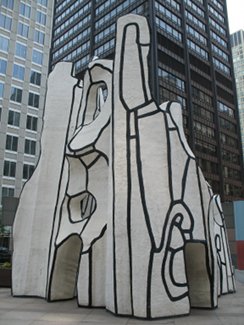
Monument with Standing Beast is a sculpture by Jean Dubuffet previously located in front of the Helmut Jahn designed James R. Thompson Center in the Loop community area of Chicago, Illinois. Its location was across the street from Chicago City Hall to the South and diagonal across the street from the Daley Center to the southeast. It is a 29-foot (8.8 m) white fiberglass work of art. The piece is a 10-ton or 20,000 pounds (9,100 kg) work. It was unveiled on November 28, 1984. It was dismantled in the spring of 2024 and was bound for a state warehouse.
19. Garfield Park Conservatory
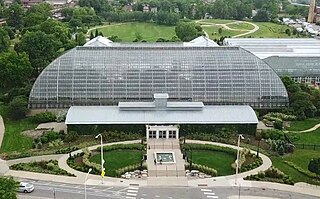
Garfield Park Conservatory, located in Garfield Park in Chicago, is one of the largest greenhouse conservatories in the United States. Often referred to as "landscape art under glass", the Garfield Park Conservatory occupies approximately 4.5 acres (18,000 m2) inside and out and contains a number of permanent plant exhibits incorporating specimens from around the world, including some cycads that are over 200 years old.
20. Loop Synagogue
The Chicago Loop Synagogue is an Orthodox Jewish synagogue, located at 16 South Clark Street, in the Loop precinct of Chicago, Illinois, in the United States. Completed in 1958, the synagogue is renowned for a stained glass artwork by Abraham Rattner.
21. Illinois Centennial Monument
Illinois Centennial Memorial Column, Logan Square Monument or Illinois Centennial Monument is a public monument in the Logan Square community area and the Chicago Landmark and National Register of Historic Places-listed Logan Square Boulevards Historic District. Built in 1918 to celebrate the 100th anniversary of Illinois' statehood, the monument, designed by Henry Bacon, famed architect of the Lincoln Memorial in Washington, DC, is a single 70-foot (21 m) tall marble Doric column topped by an eagle, in reference to the Flag of Illinois. Reliefs surrounding the base depict figures of Native Americans, explorers, farmers and laborers intended to show the great changes experienced during the state's 1st century. Although Bacon designed the main column, Evelyn Beatrice Longman designed and sculpted the reliefs.
22. Page Brothers Building
The north facade facing Lake Street of the Page Brothers Building, 177-91 North State Street in the Loop community area of Chicago in Cook County, Illinois, United States, features the city's last remaining cast iron front. Although this example was built after the 1871 Great Chicago Fire, iron facades were a common construction technique before the fire, and many of the iron fronts melted due to the intense heat. The original 5 story structure was built by John Mills Van Osdel, a prominent post-Fire architect known for buildings in the Jewelers Row District and Old Main at the University of Arkansas. In 1902, the west facade facing State Street was remodeled and another floor was added, reflecting the reorientation of commercial activity from Lake to State Street.
23. Owen Bruner Goodman Theatre
The Harris and Selwyn Theaters are twin theatres located in the Loop community area of Chicago, Illinois. They were built by Sam H. Harris and Archie and Edgar Selwyn. They were designated a Chicago Landmark on March 31, 1983. They have been redesigned by the Goodman Theatre, which is located in them.
24. Thalia Hall
Thalia Hall is a historic building in Pilsen, Chicago, Illinois, US, which is currently a mixed-use music, retail, and bar/restaurant space. It was designated as a Chicago Landmark on October 25, 1989.
25. Batcolumn
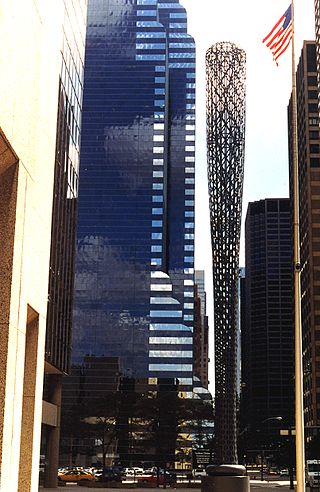
Batcolumn is a 101-foot-tall (31 m) outdoor sculpture in Chicago. Designed by Claes Oldenburg, it takes the shape of a baseball bat standing on its knob. It consists of gray-painted COR-TEN steel arranged into an open latticework structure.
26. Notre Dame Roman Catholic Church
Notre Dame de Chicago is a Roman Catholic church in the Near West Side community area of Chicago, Illinois. The church was built from 1889 to 1892, replacing an earlier church built in 1865 at a different site. French Canadian architect Gregoire Vigeant designed the church in the Romanesque Revival style; the design has a heavy French influence which can be seen in its Greek cross layout, its hipped roofs and square domes, and the emphasis on height suggested by its two cupolas and its lantern. Due to the declining size of its original French congregation, the Archdiocese of Chicago gave control of the church to the Fathers of the Blessed Sacrament in 1918. The church hosted the International Eucharistic Congress in 1926.
27. Chicago and North Western Railway Power House
The Chicago and North Western Railway Power House is the historic power house which served the 1911 Chicago and North Western Terminal in Chicago, Illinois. The building was designed by Frost & Granger in 1909; it was mainly designed in the Beaux Arts style but also exhibits elements of the Italian Renaissance Revival style. Construction on the building finished in 1911, the same year the terminal opened. The irregularly shaped building borders Clinton Street, Milwaukee Avenue, Lake Street, and the former Chicago and North Western tracks, which are now used by Metra for its Union Pacific District. The power house was built in cream brick with terra cotta trim, cornices, and ornamentation; the corner of the house at Clinton and Milwaukee features a 227-foot (69 m) brick smokestack. The building contained four rooms, a large engine room and boiler room and a smaller engineer's office and reception room. The Chicago Tribune reported in 1948 that the power house output enough power to serve a city of 15,000 people. The power house ceased to serve the station in the 1960s, but when the terminal was demolished and replaced by Ogilvie Transportation Center in 1984, the power house survived. It is one of two remaining railroad power houses in Chicago and the only remaining power house for the Chicago and North Western.
Wikipedia: Chicago and North Western Railway Power House (EN)
28. Alexander Von Humboldt Monument
The Alexander von Humboldt statue is a monumental statue in Chicago, Illinois, United States. Located in Humboldt Park, a major urban park in the Humboldt Park neighborhood, the statue depicts Alexander von Humboldt, a Prussian polymath and the park's namesake. The statue was dedicated in 1892.
Wikipedia: Statue of Alexander von Humboldt (Chicago) (EN), Website
29. Leif Ericsson Monument
The Leif Erikson statue is a monumental statue honoring Leif Erikson in Chicago, Illinois, United States. Located in the city's Humboldt Park, the statue was designed by Sigvald Asbjørnsen and erected in 1901.
30. Crossing
Crossing is a sculpture by Hubertus Von Der Goltz, installed on La Salle Street in Chicago, Illinois. The 25-foot-tall steel artwork has a statue of a man on top of a V-shaped structure. Installed in 1998, it is the only extant permanent work from the 17th annual International Sculpture Conference hosted by Chicago.
Share
How likely are you to recommend us?
Disclaimer Please be aware of your surroundings and do not enter private property. We are not liable for any damages that occur during the tours.
